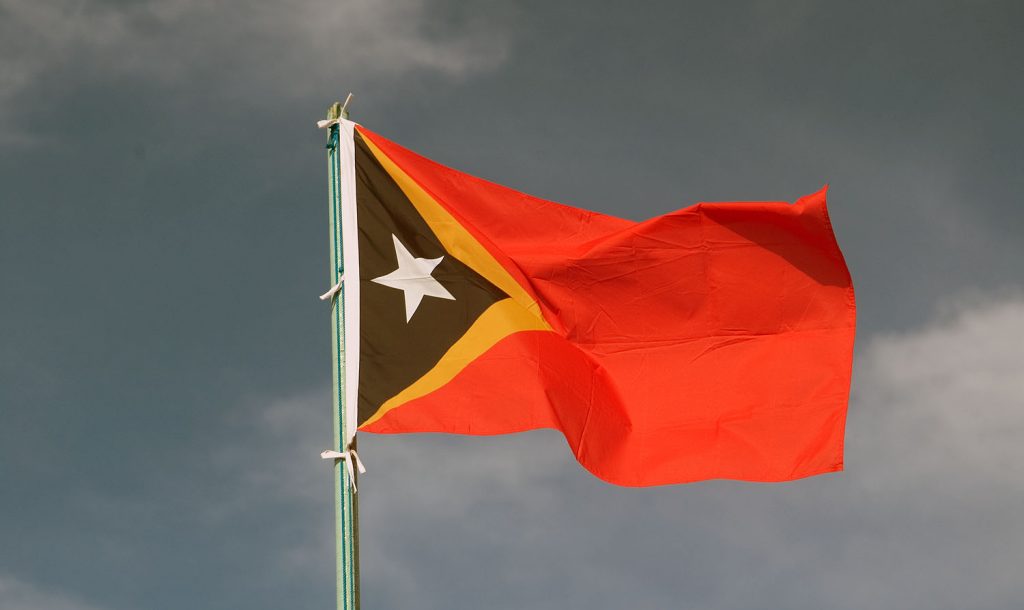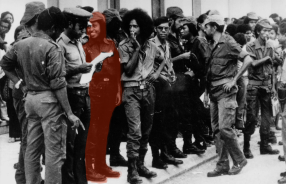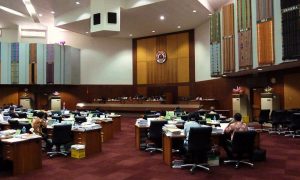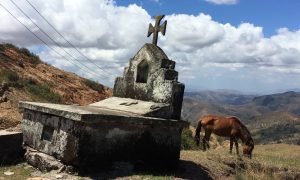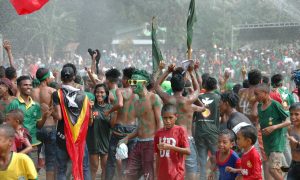On 28 November 1975, East Timor’s interim government unilaterally declared its independence from all forms of colonialism and exploitation. The historical progenitors who dominated at that time were mainly born in the 1930s and 1940s. And most had a golden opportunity to obtain a proper education in the Portuguese structure of colonialism. A week after this historic milestone, the Indonesia military invaded East Timor on 7 December 1975. Indonesia was the second country in Southeast Asia that invaded and occupied its neighbour after the invasion of Cambodia by Vietnam in 1979.
From 1975 to the 1980s, East Timor was surrounded by a culture of silence as the invaders strengthened their foothold in every part of society. The presence of eleven battalions deployed in almost every district in East Timor had placed the ‘newborn’ nation heavily under military surveillance.
However, oppression gave birth to the resistance, and from the 1980s onwards, the clandestine movement began to organise themselves in silence. Thus, the 1980s-1990s marked the beginning of the rise of the generation of resistance.
After the fall of the liberated zones located in the mountainous areas such as mount Matebian (in the east), Ramelau, Kablaki and Suai (in the west) large numbers of civilians surrendered to the Indonesian military. The population could not resist the massive scale of military offensives which was accompanied by heavy bombardment on the areas regarded as ‘resistance strongholds.’
After the surrender, the population was placed in concentration camps which spread around the territory. Strangely enough, the genesis of the clandestine movement itself was within the security hamlets established by the colonial regime. Those who played a pivotal role in the ‘second national awakening’ as it is called, were the generation who spent a few years in the mountains after the invasion, some of whom were born under heavy bombardment. The rest were inspired by their relatives as well as the experiences they had during the occupation.
Despite being under strict military control, the former guerrilla combatants who surrendered could build up their network of resistance. The communication between the guerrilla movement and urban clandestine was established through couriers and cells.
Due to food shortages, the Indonesian military allowed the population to grow their basic needs. As a result, the link between the armed front and the population under occupation was enhanced as they came across each other almost daily in search of logistic support. At the same time, discussion took place about the future of resistance, how to enhance the remnants of Falintil forces, and to attract the youth to engage more in the resistance.
Colonial Suppression and the Rise of the Student Movement
In the 1980s, the Indonesian regional government provided large numbers of scholarships to East Timorese youth to pursue study in various universities in Indonesia such as in Bali, Jakarta and Java. The aim of this ‘colonial benevolence’ was to integrate East Timorese youth politically or culturally into the Indonesian unitary state through a massive program of educational opportunities. The Indonesian government policy was the carbon copy of the Ethical Policy put into practice by the Dutch colonialists in 1901.
In contrast to colonial government forecasts, on 20 June 1988, the first student movement organisation National Resistance of East Timor Student (RENETIL-Resistencia Nacional dos Estudantes de Timor-Leste) was founded in Denpasar, Bali. Most of its founders were in their twenties and the eldest was the late Lucas da Costa, born in the early 1950s. “A few years after the invasion, in the 1980s, most of our guerrilla force had been swept away by the Indonesian military and only a handful of them had survived the Indonesian military offensive. Also, the population was under Indonesian military control and the situation seemed desperate for East Timor’s future. Therefore, after surrendering to the Indonesian military, I was thinking of how to transfer the East Timorese war to the Indonesian mainland to ignite the support from Indonesian people itself. That was the common objective which leading to the formation of the RENETIL,” Lucas recalled.
East Timor’s “Red Rosa”
A look back at Rosa "Muki" Bonaparte Soares' life of anti-colonialism and feminism, cut short by Indonesian occupation.
“I came to Dili in the early 1980s and along with a few friends, we established strong bonds which paved the way for the formation of the first student clandestine organisation in the urban area,” Avelino Coelho, the former student leader recalled on his first encountered with the like-minded group in Dili.
The emergence of the East Timor student movement in the aftermath of the Indonesian invasion kept hope alive for the resistance. When Pope John Paul II paid his visit to East Timor 1989, the first mass protest took place and was violently suppressed by the Indonesian military. Another student and youth protest that sparked bitter criticism from the international community and put East Timor issue back on international media attention was the massacre in the Santa Cruz cemetery which is well known as the ‘Santa Cruz massacre’ on 12 November 1991.
According to official sources and reports from international solidarity group, the death toll was around 250-400 youth and more had disappeared, either seeking refuge in the mountain or being dumped in a few mass graves prepared by the Indonesian military before the killing and after.
The chain of demonstrations and mass protests became a common feature and were unstoppable by the colonial regime. A new phenomenon was coming to the surface as large numbers of student became involved in demonstrations. This group was born a few years after the invasion and in the early 1980s. The role of this generation was very decisive as their votes also determined the popular consultation which got rid of the Indonesian military occupation after 24 years.
In East Timor today, in post-colonial historiography, the role of the youth and students in the struggle against Indonesian occupation have rarely been mentioned as the main focus has been given to the ‘big names’ of the guerrilla movement and its commanders, as well as the diplomatic front which was prominent in its heyday. The time has come for East Timorese historians to dig up more on the contribution of the students and youth in sustaining the continuation of the resistance movement under occupation. Extensive and far-reaching interviews need to be carried out to further explore the history of the youth movement in East Timor – especially after the crash of resistance centres in the west and east – and how the youth responded to the political transformation that took place in the mountains.
Another topic requiring serious exploration is the aftermath of the Santa Cruz massacre itself. Dozens of East Timorese student were caught by the Indonesian military and became the auxiliary force (TBO-Tenaga Bantuan Operasi) which assisted the Indonesian military in carrying their weapons and helping the military in chasing the guerrilla movement in the districts. The circumstances that they went through, how these young men re-built their bonds with the common people, and fought against the occupation is a topic that needs to be explored more to understand the everyday struggle of the common people against foreign domination.
The history of East Timor’s independence movement is all about transformation of the resistance itself from the early founders, to the following generation which was radicalised by circumstances involving family, oppression and the process of decolonisation itself. To understand the wider picture of East Timorese historiography, historians and researchers should seek to locate East Timor’s history within the ‘world system’, to quote the famous economist historian Immanuel Wallerstein, as East Timor history cannot be separated from the events that took place before, during and after the Cold War.
 Facebook
Facebook  Twitter
Twitter  Soundcloud
Soundcloud  Youtube
Youtube  Rss
Rss 